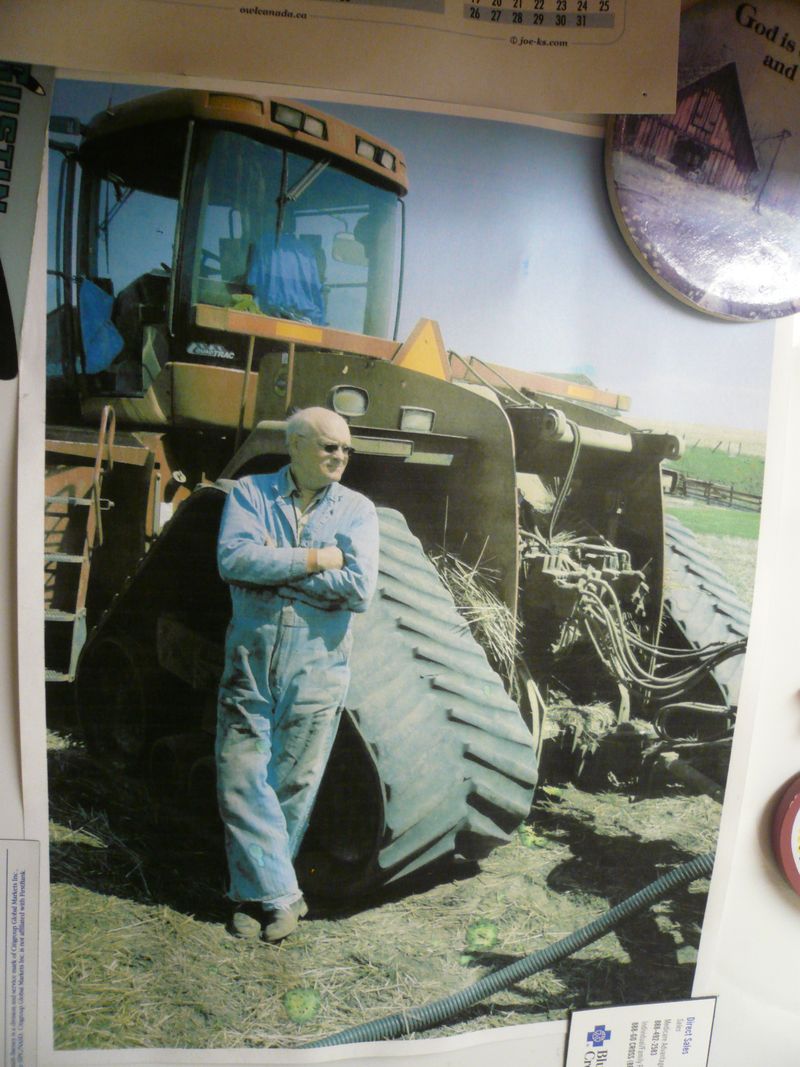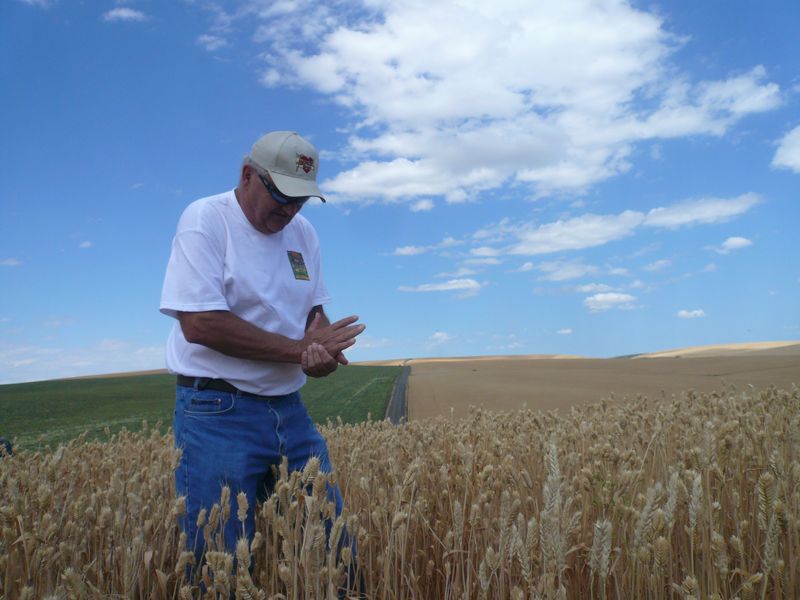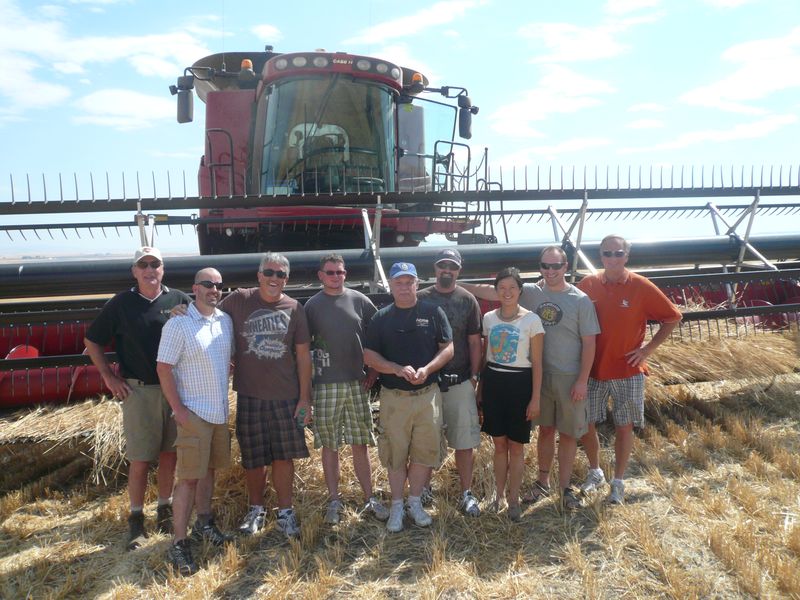Shepherding the Grain
- by Vera Chang
“And the floors shall be full of wheat, and the vats shall overflow with wine and oil.” –Joel 2:24

Once upon a time, Idaho, Washington, and Oregon farmer families began settling on the land. In 1840, the Emersons made it across the Oregon Trail. In 1897 pregnant Grandmother Matson climbed up and over 2000 feet in elevation to her Washington homestead. With roots in Switzerland, Romania, Ukraine, Canada, and the Pacific Northwest, the extended Gross-Hofers-Walter family has been in the business of farming for 460 years. Shepherd’s Grain is the story of 33 farm families, 65,000 acres, and their transformation of the land to sustainable agriculture.
Right: Shepherd’s Grain Grower, Kurt Blume from Genesee, ID
It’s the end of a hot July. I stand alongside Bon Appétit Management Company chefs and managers at the edge of a Hard Red Winter Wheat field. We are surrounded by hills covered with different kinds of wheat, garbanzo beans, and lentils. I’m pleased to be here, on Bon Appétit’s annual trip to Shepherd’s Grain, a Food Alliance certified cooperative of family farms. We are visiting the growers who raise wheat for flour that our Northwest Bon Appétit chefs use in their kitchens. Shepherd’s Grain flour makes bread so flavorful, it doesn’t need jam or butter to go with it. Grower Alan Druffel climbs into the seat of his family’s combine to demonstrate harvesting, threshing, and winnowing for us. Lee, Alan’s father, tells us the story of Shepherd’s Grain.
Shepherd’s Grain grows grain but also, one could say, goes against the grain. Worldwide, wheat farms span 60 million acres and are expected to yield 2.26 billion bushels in total this year! Global production is focused on cheapness and efficiency without regard for the land or people involved. Long story short, wheat from conventional farms is dumped into giant grain elevators to be sold at the commodity price. In this global market, it is impossible to distinguish which flour came from which farm. If Bar Star and Butte Boys Farm and Rattlesnake Ranches were to sell grain to the commodity market, for example, each of their products would be treated as one and the same, regardless of quality or agricultural practices. Conventional farmers are not only paid very little but also lose personal connection to the food they have grown and on which their livelihood depends. I now realize that most of the grain I have eaten in my life – New York’s famous bagels and cupcakes at friends’ birthday parties – is from anonymous farms and has passed through giant grain elevators.
 Left: Co-founder of Shepherd’s Grain, Karl Kupers in a field of Club Wheat
Left: Co-founder of Shepherd’s Grain, Karl Kupers in a field of Club Wheat
Ten years ago, Fred Fleming and Karl Kupers got together to discuss “how to shift the paradigm” and in 2002 Shepherd’s Grain was born. Since then, the two founders have inspired the transition of 33 grower families to preserve the craft of farming, their land, and their families’ way of life. No longer farming conventionally, Shepherd’s Grain growers are direct-seeding and no-till farming. This is a more sustainable way to raise wheat, I learn, because it decreases soil erosion and increases water absorption and organic material. Shepherd’s Grain farmers feed the soil and, in doing so, feed the crops what they need. I can taste the difference. I’m sure President Obama could also taste the difference in the sandwich he ate in Seattle last week.
The ocean of wheat turns golden as the sun sets. It is time to eat dinner: food grown by Shepherd’s Grain and prepared by Bon Appétit. I sit alongside Bon Appétit managers and chefs and Shepherd’s Grain families. I realize that I am here not just to learn about sustainable agriculture and wheat production but also, and more importantly, to get to know the people behind food. Now whenever I eat, I imagine the people who grew my food and feel like we are breaking bread together. I am grateful for this amazing day.
For more information:
- On the Shepherd’s Grain Farmer Spotlight visitors can key in the “lot code” printed on their flour bag and learn who grew the wheat
- Shepherd’s Grain Grower Eric Odberg featured on Farm Aid

Above: Shepherd’s Grain Grower Lee Druffel with Bon Appétit Management Company Northwest: Chris Linn, Willamette University; Sam Currie, District Manager; Jandis Lurd, Lewis & Clark College; Jim Cooley, Seattle University; Johan Austenberg, Cornish College; me; Ryan Morgan, Reed College; and Mark Swenson, Regional Vice President.